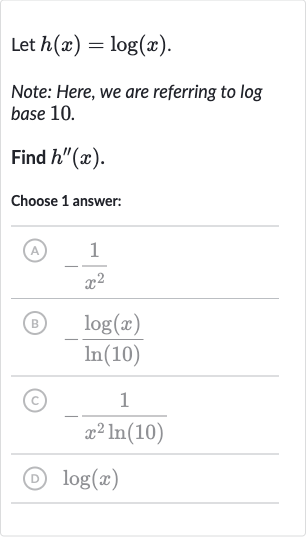Full solution
Q. Let .Note: Here, we are referring to log base .Find .Choose answer:(A) (B) (C) (D)
- Differentiate : Differentiate with respect to to find the first derivative, . Using the derivative of the logarithm function, we have:
- Find first derivative: Differentiate to find the second derivative, . We need to apply the derivative to . This is a quotient, so we can use the quotient rule or recognize it as the derivative of a reciprocal function. Since is a constant, we can differentiate with respect to :
- Find second derivative: Simplify the expression for .This is the simplified form of the second derivative of .
More problems from Properties of logarithms: mixed review
QuestionGet tutor help
QuestionGet tutor help

